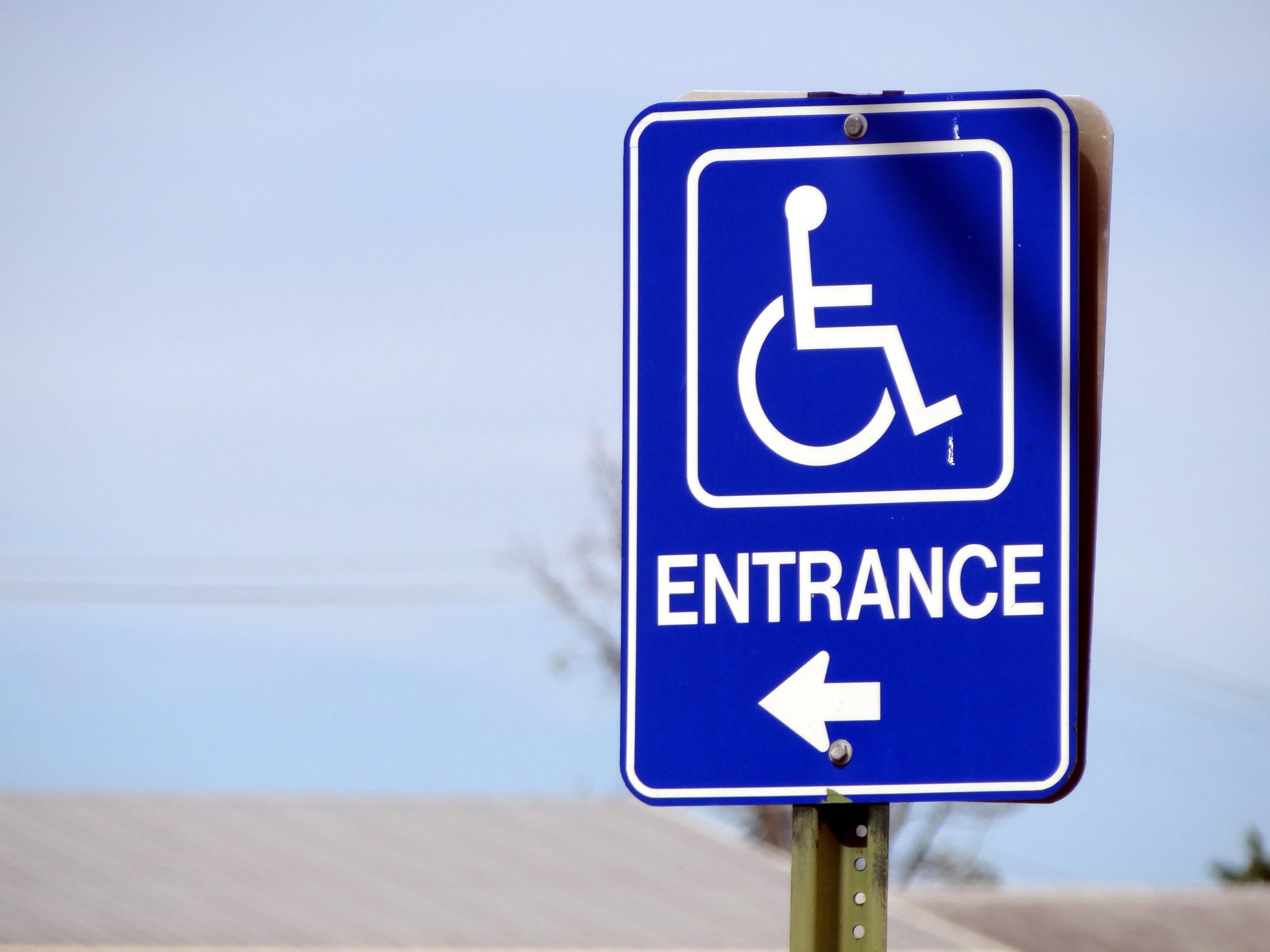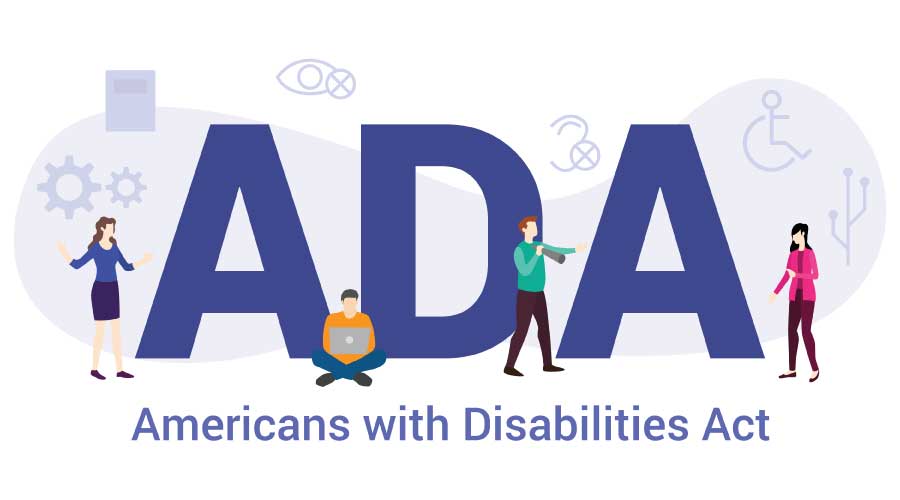Gray Areas of Accessibility
Everyone wants their facility to meet accessibility guidelines. Often, however, the road to access appears to be through an inordinately confusing regulatory environment. There are numerous and often overlapping accessibility laws, regulations, codes and guidelines.
For example, stairs that are between levels that are also connected by a ramp or elevator are not required to comply with the Americans with Disability Act Accessibility Guideline 4.9 (ADAAG). However, in Massachusetts, all stairs must comply with state accessibility requirements.
Also, accessible parking spaces are required by ADAAG to be 8-feet wide with a 5-foot wide access aisle. Oregon’s accessibility regulations require accessible parking spaces to be 9-feet wide with a 6-foot access aisle.
Below are a few of the accessibility questions that frequently come up on projects around the country.
What accessibility regulations and codes apply to this project?
Answering this question requires an analysis of several factors: What type of facility is it? Who owns the facility? What are the funding sources? In which state is the project located? There are several federal laws or regulations that may apply to a project. Although these laws may reference standards that look like building codes, it is important to remember their civil rights context.
The standards establish a baseline for accessibility. However, the laws’ prohibition against discrimination may require more than simple compliance with the standard. Failure to comply constitutes an act of discrimination.
Many states and cities have nondiscrimination laws similar to federal nondiscrimination laws. This is particularly true in the area of housing. In addition to nondiscrimination laws, all states and some cities have accessibility requirements for alterations and new construction of buildings. Unlike ADA, most of these design and construction requirements are part of local building codes. Enforcement and ramifications of noncompliance with state laws can be significantly different than federal requirements.
For example, Massachusetts’s law (521 CMR) is incorporated by reference into the state building code. The first line of enforcement is the local inspection services department. Any person can file a complaint with the State Access Board. Noncompliance with the law can result in fines of up to $1,000 a day per violation and the revocation of an occupancy permit.
The ADA specifically states that it does not replace or limit state accessibility laws. State or local accessibility laws, when more stringent than the ADA, take precedence.
Does compliance with ADAAG constitute compliance with the state code?
The short answer is no. Some states, however, have adopted ADAAG as their state accessibility code. In addition, Title III of the ADA authorizes the U.S. Department of Justice (DOJ) to certify that state laws, local building codes or ordinances meet or exceed the accessibility requirements for new construction and alterations under Title III.
The DOJ states that once a code is certified, compliance with it provides evidence of compliance with Title III of the ADA. Certification also allows reliance on the local inspection and approval process, giving local building officials a role in enforcing the substance of the ADA.
To date, the DOJ has certified the accessibility requirements in Washington state, Texas, Maine and Florida as being equivalent to the ADA Standards for Accessible Design.
Eight other jurisdictions — New Mexico, Minnesota, New Jersey, Maryland, California, Indiana, North Carolina, and the County of Hawaii — have also submitted codes for certification review. In addition, DOJ is reviewing several model codes.
Can I rely on “ADA Certified” products?
While certification of state codes will make it easier to provide compliant buildings, another form of certification only adds to the confusion. Neither the DOJ nor the Architectural and Transportation Barriers Compliance Board (ATBCB), the agency that developed ADAAG, certify any products as being ADA compliant.
Building product catalogues of every variety include various statements about accessible products. International Symbols of Accessibility or statements regarding ADA certification can be useful in narrowing the search for compliant products. However, they cannot be relied upon. There are several “accessible” drinking fountains that do not meet ADAAG’s requirement for the trajectory of the flow of water. Product specifications should be verified against ADAAG and state requirements.
Who is liable for noncompliance?
Even with the best of intentions, sometimes work is completed on projects that lack fully compliant accessibility. Sometimes the obstacles go unnoticed. However, when they are identified and mitigation is required, the issue of liability is raised. It is crucial that facility executives seek counsel to address specific questions of liability. In general, liability is related to the barrier and the law, regulation, code or standard in violation. Compliance with state and municipal building codes is the responsibility of the architect.
Under the ADA and other civil rights laws, the entity that owns, operates or otherwise controls the building or facility is responsible for ensuring it is accessible. Architects have been included as defendants in ADA litigation, but with contradictory results. Courts in Florida and Minnesota have held that the ADA’s prohibition against discrimination applies to architects while the U.S. Court of Appeals for the Ninth Circuit has held that the architect of a movie theater could not be held liable under the ADA.
The U.S. Supreme Court will likely make the final determination on this issue. Architects will continue to face liability for noncompliant designs, even if the Supreme Court ultimately decides in their favor. A facility owner will still have the option to file a negligence claim against the architect of a noncompliant facility.
The ADA addresses the question of liability between landlords and tenants more clearly. The DOJ’s regulations implementing Title III of the ADA allow responsibility for compliance to be assigned through standard contractual vehicles — leases.
What can I do to help ensure that my project is fully compliant?
There are two key steps to take. The first is to perform a jurisdictional analysis.
Managing projects that result in fully accessible and compliant facilities requires a thorough analysis of the range of accessibility regulations that may be applicable to a specific project. The analysis will help determine, at the early planning stage, how many of what must be accessible. Do all public entrances have to be accessible, 50 percent or just one? This jurisdictional analysis must be done at the beginning of the project and reviewed at key milestones.
The specific questions that should be asked depend in part on the state that the project is in. However, typical key questions include:
- Is the facility’s owner a government or private entity?
- If it is a private entity, does it receive any public financial assistance — not just for the specific building project?
- Is the facility open to the general public or used by employees only?
- Is the project new construction, an addition or an alteration?
In alteration projects, ask the following: Are “primary function” areas (see ADAAG4.1.6(2)) being altered? What is the cost of the planned alterations?
For multifamily housing projects, additional questions include: Is the housing being developed by a state or local government agency? How many units? Are the units for rent or sale?
The second issue involves knowing your resources.
Having in-house expertise is the easiest source for answering accessibility questions as they arise during projects. Every organization should designate someone to become familiar with the federal laws and regulations as well as the requirements of the states in which the organization has facilities. However, the accessibility issues for many projects are not straightforward, and second opinions or interpretations are often warranted.
David Kessler is principal of Kessler McGuinness & Associates, a consulting firm specializing in the Americans with Disabilities Act, in Newtonville, Mass.
Additional Resources
Architectural and Transportation Barriers Compliance Board
(202) 272-5434 (voice)
(202) 272-5449 (TTY)
Office on the Americans with Disabilities Act
(202) 514-0301 (voice)
(202) 514-0381 (TDD)
(202) 514-6193 (Electronic Bulletin Board)
Disability and Business Technical Assistance Centers
(800) 949-4232 (voice and TTY)
U.S. Department of Housing and Urban Development
Questions regarding compliance with the Fair Housing Act can be directed to regional enforcement offices. To locate an office, check the homes and communities Web page.
Different Facilities Face Different Legal Requirements for Accessibility
Here’s an overview of some of the laws that courts and government agencies have used in making accessibility determinations:
ADA is a civil rights law prohibiting discrimination based on disability. Title II of the ADA covers all programs and services provided by public entities. Title III covers all private facilities, public accommodations — such as restaurants, hotels, retail establishments, medical offices and theaters — and facilities that are not open to the public, such as factories and warehouses. The ADA Accessibility Guidelines (ADAAG) are incorporated in the DOJ’s implementing regulations.
ADAAG provides minimum requirements. ADA is enforced by the DOJ through settlement agreements and lawsuits. Lawsuits can also be filed against an entity by any qualified individual with a disability.
Section 504 of the Rehabilitation Act of 1973
Like ADA, Section 504 prohibits discrimination based on disability. It requires that the programs and services of any entity receiving federal financial assistance be accessible. A principle method of providing program accessibility is to alter the existing building to remove barriers and construct new accessible buildings. Section 504 references the Uniform Federal Accessibility Standards (UFAS) as its design standards, although ADAAG can also usually be used.
Fair Housing Act as amended (1988)
The 1988 amendments to the Fair Housing Act extend to persons with disabilities the same kind of nondiscrimination protection afforded to persons based on race, color, religion, sex and national origin. This includes the design of newly constructed multifamily housing (four or more units for first occupancy after March 13, 1991). Such buildings must meet specific design requirements so public and common-use spaces are accessible to people with disabilities. Interiors of dwelling units must be designed to meet modest accessibility requirements.
Architectural Barriers Act (ABA)
The ABA requires that all buildings, other than privately owned residential facilities, constructed by or on behalf of, or leased or financed (in whole or in part) by the federal government, must be accessible to individuals with disabilities. UFAS is the applicable standard.
When State Laws Matter
When reviewing accessibility laws and guidelines, it’s important to remember that state or local provisions take precedence over federal law when their requirements are more stringent. Most state and local codes are, however, based in whole or in part on the specifications contained in national standards. Here’s a look at what standards various states have adopted:
ADAAG and UFAS contain scoping provisions that specify the types of facilities and number of elements covered. ANSI and BOCA address only technical requirements. Scoping is established by the adopting jurisdiction. Some states use different codes for different types of projects.
For example, in New Hampshire, public facilities are covered by ANSI, as modified, and New Hampshire Revised Statute 275-C:14. Public accommodations, however, are covered by New Hampshire Revised Statute 155:39-d.
Contacts for more information about the accessibility requirements of every state can be found at the U.S. Access Board Web site.
Related Topics:










